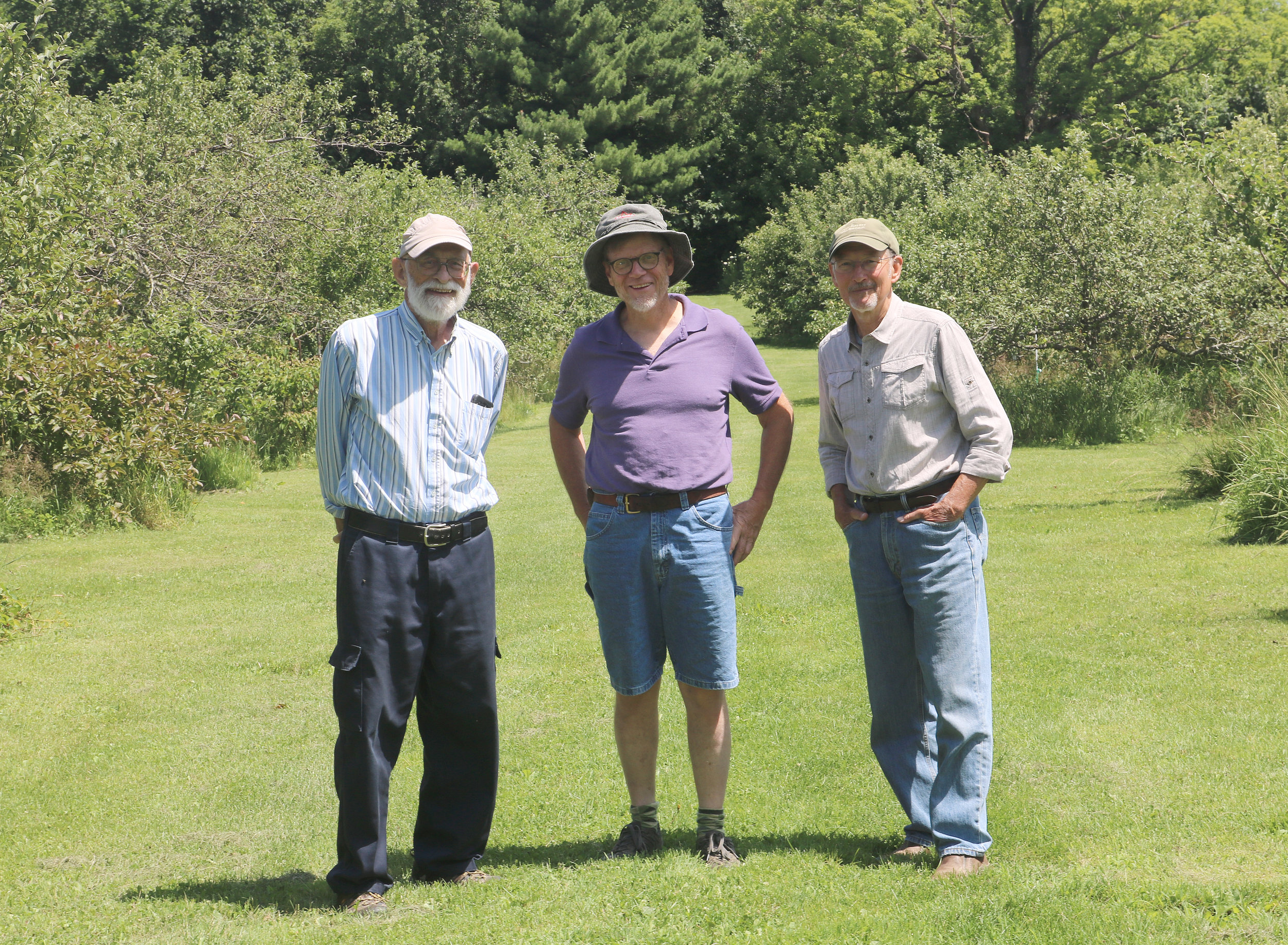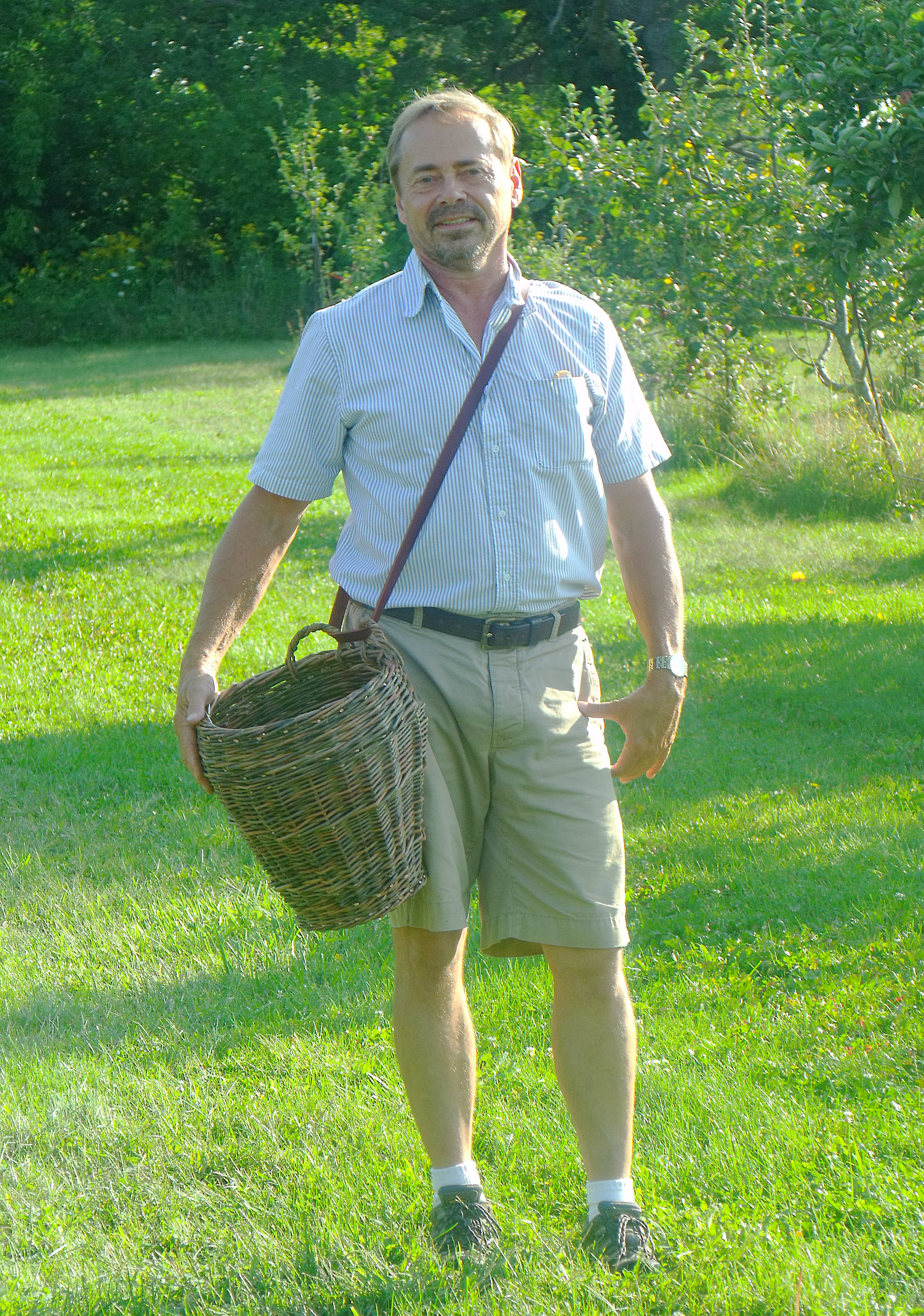A slice of apple history at Seed Savers Exchange
/David Sliwa, first orchard manager at Seed Savers Exchange, prunes side shoots in the temporary nursery at Heritage Farm, about 1990.
Come each autumn, the expansive Historic Orchard at Heritage Farm in Decorah displays an impressive array of apple colors, from green and yellow to red and pink. Some fruits are small, others somewhat larger...some are round, others more of an oval shape. All taste distinct, and most bear glorious names like ‘Chanango Strawberry,’ ‘Coos River Beauty,’ and ‘Lamb Abbet Pearmain.’
“What’s so special for me is the celebration of the diversity of the apple that’s there,” reflects David Sliwa, Seed Savers Exchange’s first orchard manager, of the site, home to some 1,200 different varieties. “It’s a joy to walk through the orchard in the fall at harvest time, taking in the beauty of that diversity and the distinctness of each variety.”
Kent Whealy and Diane Ott Whealy, Seed Savers Exchange co-founders, dreamed of an orchard that would stem the loss of historic apple varieties long before the Historic Orchard took root in May 1990. But they first had to acquire the land to take on such a project. In November 1986, Seed Savers Exchange purchased a 57-acre farm six miles north of Decorah, Iowa; it added another 83 acres in late 1989. (This second purchase provided the land on which the Historic Orchard would be planted.)
In 1988 Sliwa joined the burgeoning organization’s staff as orchard manager, and that same year he and Whealy visited the National Clonal Repository (NCR) for apples in Geneva, New York. There they talked with Phil Forsline, curator of the NCR collection, and Roger Way, the world-renowned apple breeder at the New York State Agricultural Experimental Station, who had built an apple collection of about 2,000 cultivars over 35 years. And they returned inspired and energized to establish an orchard at Heritage Farm. “After acquiring Nomenclature of the Apple by W. H. Ragan, we felt we had a handle on defining the scope of the SSE apple collection—we would build a collection of historical apple germplasm of the 19th century, and Ragan would be our guide,” Sliwa wrote in 1988.
Starting that collection took plenty of dedication and hard work, including an intense, almost week-long grafting session during which Sliwa was joined by Lorado Adelmann and Lindsay Lee (current orchard manager).
Men on a mission: Lorado Adelmann, Lindsay Lee, and David Sliwa (shown in SSE’s Historic Orchard this July) grafted more than 1,000 apple trees over the better part of a week in February 1989,
“In February 1989, we gathered around my kitchen table with dormant rootstock and scion wood—and spent the better part of a week grafting stems to roots and thereby making new trees,” wrote Sliwa in 1989. “Lindsay and I made long, slanted cuts with tongues on the size-matched scions and rootstems; Lorado then took those joined pieces and wrapped them snugly with grafting rubber bands and attached the proper labels.”
By the end of that week, the threesome had grafted four trees each of 277 varieties—203 varieties from Phil Forsline at NCR in Geneva, New York, and 67 varieties from Charles Estep of Riverside, California. “Scions, with three to four buds, of each variety were grafted onto two P22 dwarfing rootstocks and two onto Antonovka seedling stocks,” Sliwa recalls. The success rate? Ninety percent.
In early May 1989, the successfully grafted trees were planted at Heritage Farm in a nursery adjacent to the iconic red barn. The following May, 272 trees were planted in the Historic Orchard, where Adelmann and Whealy had planned and constructed a deer fence running 3,500 feet and standing eight feet tall and Whealy and his son, Aaron, had physically mapped out each tree’s location.
Dan Bussey, former Seed Savers Exchange orchard manager and advisor, collects apples in the Historic Orchard at Heritage Farm. Bussey maintained and grew the orchard collection during his years overseeing orchard operations.
Its primary purpose, from the start, has been to serve as a living museum; it remains one of the few extensive apple collections easily accessible to the public. “This collection is rare—it is something that you just don’t see,” says Dan Bussey, orchard manager from 2012-18 and longtime orchard advisor prior to that. “The fact that it is publicly accessible is truly amazing and unique.”
Today Seed Savers Exchange stewards some 1,200 varieties, including 180 historic varieties historically grown in the Upper Midwest that Bussey acquired in 2013 from apple enthusiast and longtime SSE supporter Nick Botner, who built one of the largest collections of apple trees in the world.
“We have lost many varieties just due to market forces,” says Bussey when asked why preserving apple diversity is so important. “We have lost some older varieties that are absolutely fabulous but have just been forgotten, and when you revisit them, you realize how wonderful they are and wonder how we ever let them go.”
Lee sees preserving rare apple varieties as saving an important slice of the country’s storied history.
“The history of apples in this country has a very direct link to the history of the country itself,” he says. “Apples were brought by the first European immigrants and have been part of the whole progression of our history—the story of the apple in America, in fact, is very much in lockstep with the story of our country’s growth, development, and evolution.”
You can help save these historic varieties by donating today to Seed Savers Exchange’s Historic Orchard Revitalization Campaign. Your gift will help ensure that the more than 1,200 amazing apple varieties in our Historic Orchard at Heritage Farm continue to be preserved and shared, in turn ensuring that the diverse beauty and taste of North America’s 19th-century apple heritage is here for all of us today and for generations to come.
This is the second of a four-part series about Seed Savers Exchange’s Historic Orchard. Next up: a closer look at some of the rare varieties in the orchard.
















